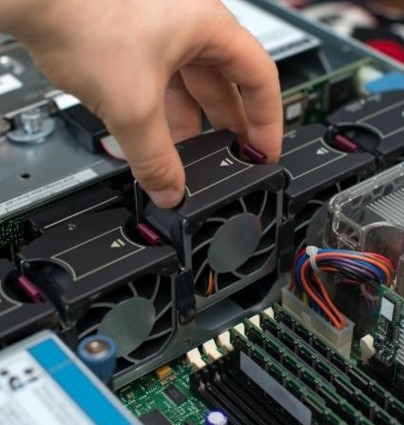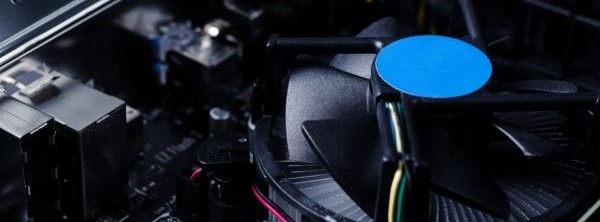The fan connectors of a motherboard give the fans the power to run, and, in many cases, users can control the fan speed. Occasionally, the number of fan connectors is much smaller than the number of CPU fans. Many cooling fans connect to a computer using a standard connector, so adding a fan shouldn’t be a problem. This article details installing PC fans, connecting case fans, RGB fans, and three-pin fans to a MOBO.
Are you wondering how you can plug in additional fans to your MOBO? Use the JBtek Y splitter to split the motherboard headers. If the fans are many, you can use the Deepcool PC fan hub or the CRJ Molex adapter.
How To Connect Fans To Motherboard
The fan connectors of a typical motherboard are four- or three-pin connectors. They plug into the end of a PC fan cable by connecting to the end of a four- or three-pin fan on the system board. The connector doesn’t come with a latch to secure the connection, and so you can easily remove the fan connectors of a motherboard by pulling it out. However, the connection must not be loose after connecting.
How To Connect Rgb Fans To Motherboard
There are three kinds of RGB fan connectors that you can connect to your motherboard.
- 3-pin RGB fan
- 4-pin RGB fan
Motherboard Without Headers
A 3-pin and 4-pin fan doesn’t require any technicalities to attach them, while motherboards that lack headers may need some skills to ensure that the connections are functional.
Connecting The 3-Pin RGB Fan
3-pin RGB fans are also known as DC fans. These RGB fan headers on the motherboard are voltage-controlled and are cheaper and easier to connect. However, these fans make a lot of noise. You can only use the 3-pin RGB fan connection method when the connector has three cables. In general, when compared to a 4-pin fan connector, a 3-pin fan connector is smaller.
On the front, it has three square holes and three cables on the back. These pins are yellow for speed sensors, red for power, and black for ground. The way it works is similar in both cases. Before proceeding, make sure the power switch is turned off. Then follow the instructions below:
Separate Housing
- You should always ensure that you read the instructions included in the package.
- Manufacturers usually mark the ports/slots, and so try to locate the RGB marks.
- Remove the mounts.
- Now attach the RGB fan connector to two controllers.
- Attach it to the motherboard fan headers.
Press Hard Enough To Connect Correctly.
After the connections are made, it’s time to put the RGB fan pinout on the case. Put the fans in front or behind the case and secure them correctly.
Connecting The 4-Pin RGB Fan
4-pin RGB fans are also known as pulse width modulation (PWM) fans. These fans have a higher RPM and are much more efficient and faster. In most cases, users prefer using 4-pin fans because they are easy to control. These fans are better than others because they are quiet and run silently.
You can only apply the 4-pin RGB fan connection method when the connector has four cables, and you cannot connect them to a three-wire connector. These connectors have four square holes in the front and four cables on the back.
Keep in mind that a 4-pin fan can connect to the 3-pin connector on the system board. Follow the steps similar to those of 3-pin RGB fans and connect the 4-pin RGB fan to the fan header on the system board. You can put the RGB fans on the back or front of the case to see the lights. Ensure the case is closed securely.
How To Connect Case Fan To MOBO
Are you wondering how to install case fans to the motherboard? There are two methods on how to connect case fans to the motherboard, as explained below:
Using The Y-Shaped Fan Header Splitter
The end of the female JBtek Y splitter goes into the motherboard fan header. On the male end of the splitter is where you connect the fans.
If you want to install the motherboard case fan connector physically, align the fan’s four corner holes with the corresponding four holes in the chassis and secure them with screws.
Using PC Fan Hub
Another method to connect case fans to the motherboard without worrying about power draw is the Deepcool PC fan hub.
It needs a SATA power connector from the power supply and a 3/4-pin connector from the motherboard’s header to the fan hub.
The fan hub female end connects to a motherboard that branches out to multiple male headers to connect fans.
Most feature a magnet or adhesive tape that you can use to connect them to the case.
Where To Plug In Fans On Motherboard?
If you are unsure where to plug in case fans on motherboards, it’s worth knowing that motherboards have fan headers, which are the motherboard terminals. This is where many of the computer’s cooling fans are connected to. A guide on where to plug in case fans on the motherboard is provided.
Using the guide on the header, align the notch on the connector. Line up every side, press the connector gently into the header, and check the connection to ensure it is not loose. A secure connection should see the header of the motherboard and the end of the fan connector flush.

How To Install Fans On Mobo FAQ
Can I Connect A 3-Pin Fan To A 4-Pin Connector?
It is possible to connect a 3-pin fan to the system board with either a 4-pin or a 3-pin connector.
Do You Plug Fans Into The Motherboard?
If you want to connect your fan to the motherboard, you should check for suitable headers.
Where Do CPU Fans Connect To The Motherboard?
Connect the power cable of the CPU fan to the CPU power connector on the system board
How Many Fans Can You Connect To The Motherboard?
Most headers of the system board offer 1A, and so in your connection, don’t exceed four fans to the header.
Can You Connect The Molex To The Motherboard?
Molex adapters plug directly into the power supply, bypassing the system board.
Final words about which way to Install Fans to MOBO
Installing case fans on the motherboard is very easy. If your motherboard doesn’t have enough fan connectors to install several fans, you can simply connect the remaining fans to a power supply unit. Modern systems often use dedicated 3-pin or 4-pin fan connectors, although you can also use a standard 4-pin CRJ Molex adapter. Another option is to get the JBtek Y splitter that connects the two fans to the motherboard fan connector or the Deepcool PC fan hub for many fans.
Table of Contents



